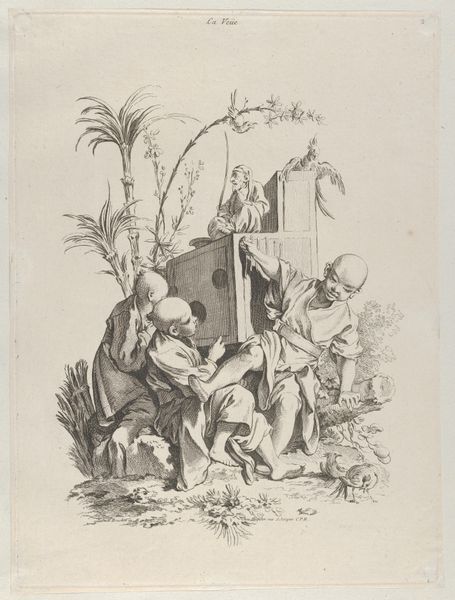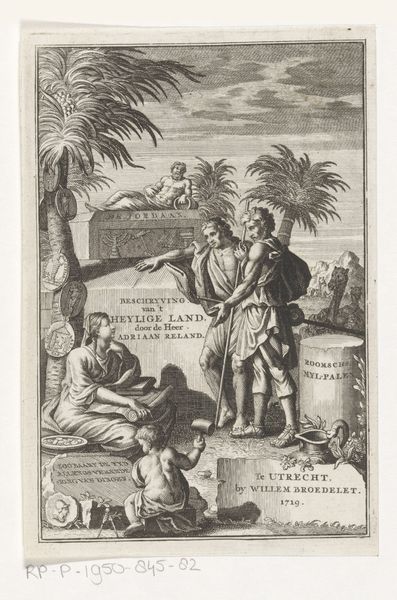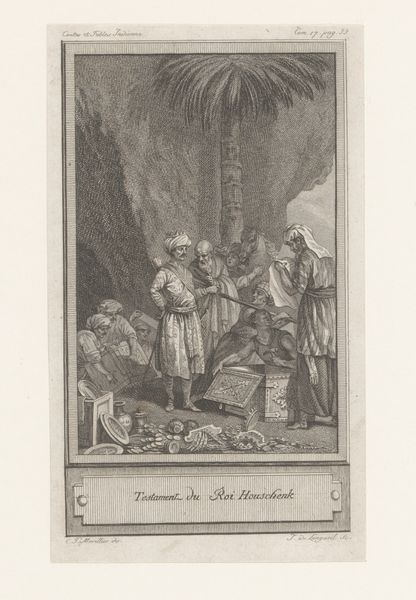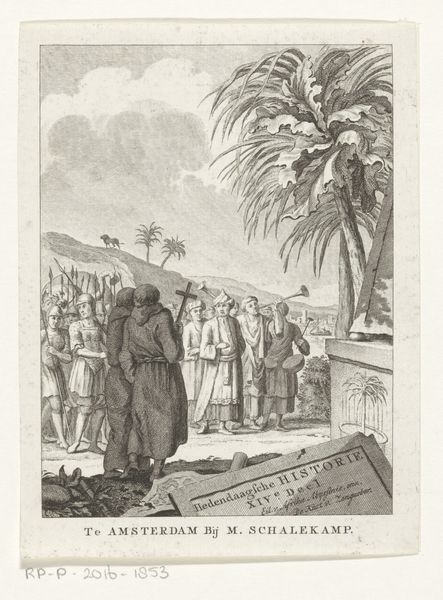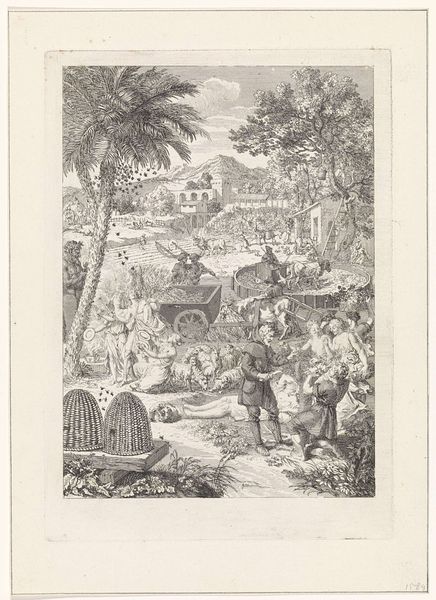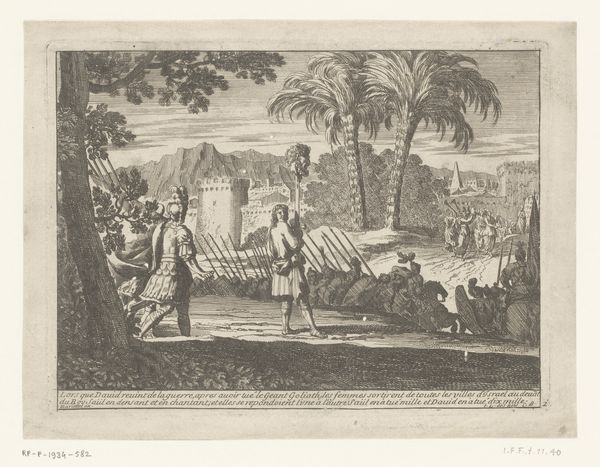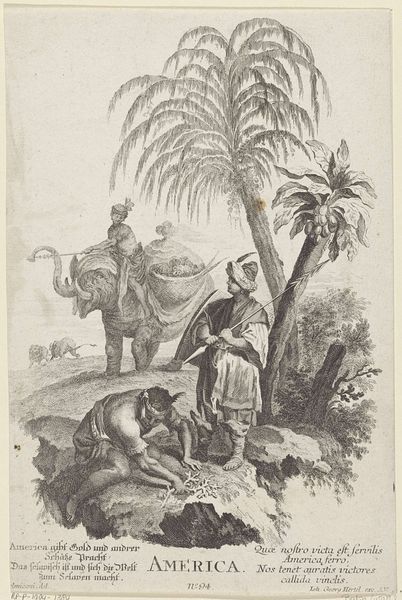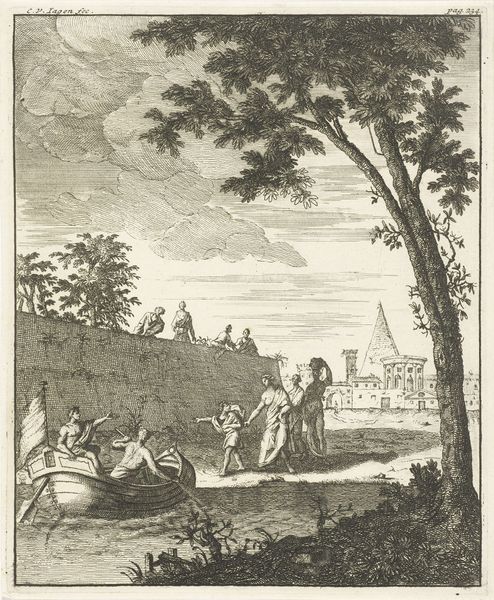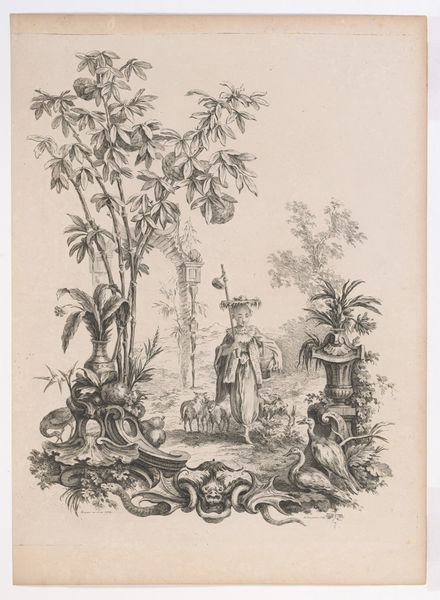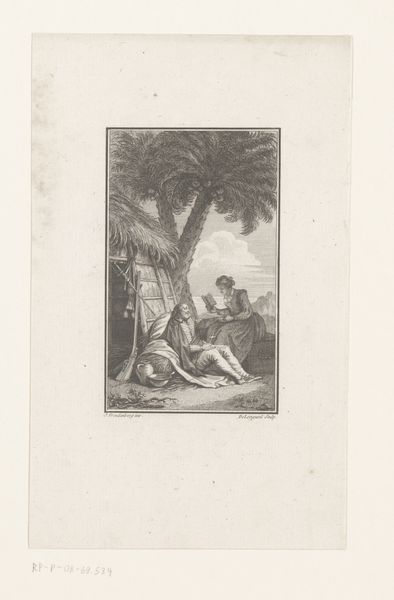
print, engraving
#
neoclacissism
#
allegory
# print
#
pen illustration
#
old engraving style
#
landscape
#
figuration
#
line
#
history-painting
#
engraving
Dimensions: height 167 mm, width 126 mm
Copyright: Rijks Museum: Open Domain
Curator: This is "Allegorie op Noord- en Midden-Afrika," or "Allegory of North and Central Africa," an engraving created by Carel Jacob de Huyser in 1786. What strikes you first? Editor: The scene feels like a classical landscape, but populated with elements of an exotic, imagined Africa. It's a detailed print; everything from the animals to the figures and plants seems carefully placed. How do you interpret this work, considering its historical context? Curator: This piece exemplifies the problematic genre of allegorical representations of continents during the Enlightenment. We see Africa personified, but through a European lens steeped in colonial ideology. Notice how the African figures are depicted in relation to the flora and fauna. Consider who is looking – for whom was this image made, and what assumptions about power and knowledge were at play? Editor: So, rather than a straightforward depiction, it's a commentary on European perceptions and power dynamics related to Africa? The composition normalizes a hierarchical viewpoint. Curator: Exactly. The "allegory" becomes a tool to justify and naturalize colonial power. What does the presence of classically posed figures alongside African animals suggest about the perceived relationship between European civilization and the African continent? Editor: I hadn't considered it so directly. It’s unsettling to see how seemingly innocent depictions could reinforce such biased viewpoints. I thought it was a straightforward attempt to capture what Africa looked like, but that's completely wrong. Curator: And that is precisely why a critical lens is essential when engaging with historical art. The image, while seemingly a factual representation of the continent, actually exposes more about the prevailing ideologies of 18th-century Europe. Editor: Thanks, it’s really changed my understanding of prints like this one, it seemed like a fairly innocent and classical landscape. I will definitely look more into this relationship in similar images. Curator: Indeed, every brushstroke tells a story, but sometimes the most powerful narratives are those lurking beneath the surface.
Comments
No comments
Be the first to comment and join the conversation on the ultimate creative platform.
